The digital revolution has been going on for decades, but it’s not just the tech industry that feels its effects. Manufacturing companies are also being forced to adapt or risk becoming obsolete.
In this article, we’ll look at digital transformation in manufacturing and what challenges manufacturers face in their efforts to keep up with it.
What is digital transformation?
Digital transformation is the process of embracing digital technology to improve business operations. It’s a strategy that helps companies create seamless customer experiences, increase revenue and save money. This can be challenging for manufacturing companies because they often slow adapt to new technologies. When it comes to digital transformation, it’s not just about technology; it’s also about culture and business processes. Companies need to design their organizations around digital capabilities if they want them to succeed in the long term.
Digital transformation in manufacturing
You may have heard that manufacturing is undergoing a digital transformation. It’s not just the latest buzzword; it’s also a long-term trend. Digital transformation in manufacturing is more than just automation and robotics—it’s about embracing new ways of working and collaborating with your partners, suppliers, and customers to create better products faster and more efficiently than ever.
Digital transformation encompasses many areas: Cloud computing, big data analytics (including machine learning), mobile devices and apps for employees on the factory floor, predictive maintenance for equipment (which helps prevent downtime), Iot, agile development methodologies like DevOps (a more seamless collaboration between IT teams and business units).
Digital transformation trends and challenges in manufacturing
What’s the catch? There are two main challenges with digital transformation in manufacturing:
- There is no clear path to making everything digital yet, so it’s a process of trial and error. The good news is that it’s not a linear path—you don’t have to do things in order; you just need to figure out what works for your industry and what doesn’t work for others. As long as you keep an open mind and learn from other industries’ experiences, your company will be better off at the end of the day.
- It takes time to build new processes around these technologies, but with every step forward comes more knowledge about how they can help (or hurt). This means that companies who start early on their journey have an advantage over those who wait until later stages when everything has already been figured out by someone else; if we’re talking about five-year plans here, then there may not be much time left. Before 2023 rolls around.
Cloud computing
Cloud computing is a type of computing in which shared resources, software, and information are provided to computers and other devices on demand.
Cloud computing is a model for enabling ubiquitous, convenient, on-demand access to a shared pool of configurable computing resources (e.g., networks, servers, storage, applications, and services) that can be rapidly provisioned and released with minimal management effort or service provider interaction.
AI and machine learning
Digital transformation in manufacturing can be made more streamlined and efficient by incorporating AI and machine learning. These technologies are not just buzzwords you hear about; they’re authentic and increasingly crucial to businesses who want to succeed in the future. While the two terms are often used interchangeably due to their similar acronyms, it’s helpful for us as consumers of technology to understand exactly how each one works so we can make informed decisions about what technology is suitable for our business needs.
AI stands for artificial intelligence; it’s programming that allows computers (and other devices) to act like humans do when performing cognitive tasks such as learning, problem-solving, planning, and communicating with others via spoken language instead of just text commands typed into the screen like most programs require today.
Machine learning refers specifically to software algorithms which allow computers themselves learn from experience rather than needing someone else teach them everything first before letting them loose on tasks – this means no longer having human beings spend hours creating lists of instructions telling machines how they should operate within each task given then waiting around hoping nothing goes wrong until next week when another update comes out fixing whatever bug messed up last month’s work.
3D printing
3D printing is a type of digital manufacturing that uses a process in which successive layers of material are laid down under computer control. Creating a three-dimensional object typically involves slicing through a 3D model using software and then converting it into an STL file (extension .stl) using slicing software.
It’s then sent to the printer, built up from successive layers. While 3D printing has been around since the 1980s, its commercial use didn’t take off until about 10 years ago, when high-quality printers became more affordable for consumers and businesses.
3D printing has been used in many industries, including healthcare, automotive manufacturing, aerospace engineering, and more.
Manufacturing trends for eCommerce
Manufacturers are looking to make their products more accessible to customers. For example, it triggered headlines when Walmart announced that it would sell products made by 3D printers in its stores. This move is a more significant trend of companies using 3D printing technology to produce customized goods on demand.
In addition to making their products more accessible, some manufacturers are consistently adopting a mobile-first strategy as a way to improve the customer experience and promote the sale of their goods online. In particular, small businesses may benefit from this approach because it allows them greater flexibility when running a business with limited resources and staff members who don’t have much expertise in coding or design.
IoT
IoT is a network of physical devices, vehicles, buildings, and other items embedded with electronics, software, sensors, and network connectivity that enables these objects to collect and exchange data.
IoT in manufacturing means using sensor-enabled equipment to track real-time data about operations and machinery. This data can improve efficiency by reducing downtime or calibrating equipment more precisely for optimal results.
Smart manufacturing
Smart manufacturing is the use of technology to improve the efficiency and quality of manufacturing. It can reduce waste, improve customer service, and increase employee productivity. The concept has been around since the Industrial Revolution but has taken off in recent years with advancements in data science, machine learning, and cloud computing.
However, the most common way smart manufacturing is implemented is through sensors that track parts moving through production lines (for example, temperature or pressure gauges). Data from these sensors is collected by an integrated system that analyzes it for patterns or alerts managers when something goes wrong—for instance: If there’s an increase in pressure, then one of your employees may need medical attention
Manufacturing companies must keep up with the digital revolution or risk going the way of Blockbuster Video.
If you think about it, the manufacturing industry is no different than Blockbuster Video. It has a long history and was once a significant part of our lives, but now it’s all but forgotten.
Manufacturing companies must keep up with the digital revolution or risk going the way of Blockbuster Video. If they don’t embrace change and new technology, they’ll quickly lose their competitive edge to other companies doing more with less (and more).
In fact, some experts say half of the current jobs in manufacturing could be eliminated by automation technologies by 2060. To avoid this fate—and ensure continued success in your company—you need to do something now: Embrace digital transformation as soon as possible.
In conclusion
The manufacturing industry has been one of the most critical sectors in our economy for centuries. However, some key trends have emerged over time and reshaped the way we do business. One of these trends is digital transformation, which can be defined as an innovative approach to deploying technology that aims to increase productivity and efficiency while also improving customer experience.
It’s no secret that many companies have adopted this strategy as part of their business model—and with good reason: Digital transformation offers many benefits and can help companies compete in today’s global marketplace by increasing employee engagement, enhancing collaboration across departments, or even achieving better results from existing assets.
The challenge lies in how each company decides how much change is needed; after all, there are so many ways technology can be applied—and at such differing costs. That’s why it’s crucial to understand what works best for each organization based on its needs before investing energy into something new.










